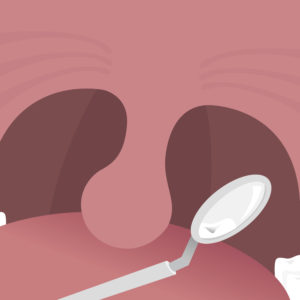
 Pie Hole. Chops.
Pie Hole. Chops.
Whatever you want to call it, the mouth is amazing. I have always been in awe of the many different ways in which we depend upon our mouths each and every day – and moment, really – to live, love and laugh. From eating and drinking, to smiling, kissing and expressing emotion, our mouths have many diverse and important functions. Yet how many of us stop and think about what parts actually make up the mouth and are responsible for giving us such amazing abilities and flexibility…
The Uvula
So what is “that punching-bag thing” at the back of our mouths, as I’ve heard many patients describe it? It’s proper name is “Palatine Uvula” and I wish I could answer this question in greater depth myself, but cannot as the Uvula remains as somewhat of a mystery to the scientific community. There are some theories about what it does, however, including lubricating the mouth for speech and inducing a gag reflex.
Philtrum
Also called the “Infranasal Depression,” the philtrum is that groove that most of us have above the upper lip. It actually has two important functions: allowing us to have an extensive range of facial expressions, and enabling us to speak clearly.
The Oral Mucosa
Everything inside of your mouth, with the exception of your teeth, is covered by the oral mucosa. This tissue is a membrane that protects the mouth, secretes mucus and is what is responsible for absorbing materials like medications that are administered sublingually, or under the tongue. The colour of the oral mucosa can vary in accordance with one’s skin colour and can also reveal health problems. Very pale mucosa can be a sign of anemia while patchy or extremely dark oral mucosa may suggest that other medical problems may be present.
The Tongue
The tongue is a real worker. Made up of a group of muscles, it’s even busy while we sleep, pushing saliva down our throats. It moves food to our teeth so it can be properly chewed and digested. In babies, it works with the jaw to enable efficient breastfeeding. The tongue is key to shaping and developing growing jaws and erupting teeth. Of course, the tongue plays an essential role in our ability to speak as well.
Salivary Glands
We have three sets of salivary glands in our mouths and necks: the parotid, submandibular, and sublingual glands. In addition, the oral mucosa is sprinkled with numerous tiny salivary glands. Salivary glands are essential in that, as you guessed it, they produce saliva which contains enzymes that help break down our food and make it easier to swallow. Saliva also plays an important role by rinsing away food particles, killing bacteria that can cause tooth decay, and by lubricating our mouths so we can speak clearly.
The Hard Palate
The hard palate is the front of the roof of the mouth. It plays an important role in nursing, eating and speech. In a condition known as “Cleft Palate”, the left and right sides of the hard palate are not joined together. While cleft palate can have a severe impact on one’s ability to speak and nurse, fortunately it is now treated with great success.
The Soft Palate
The soft palate is the back area of the roof of the mouth.
It is movable and is important because it makes sure our food doesn’t go into our nose and nasal passages during the act of swallowing. Furthermore, it protects the nasal passage when we sneeze by diverting some of the sneeze’s excretions to the mouth.
Taste Buds
Where would we be without our tastebuds? Located on the tongue and other areas of the mouth, they are what enable us to perceive tastes like sweet, sour and bitter.
Steven Deskin is a Brantford Dentist in general practice.

 Pie Hole. Chops.
Pie Hole. Chops.
